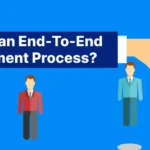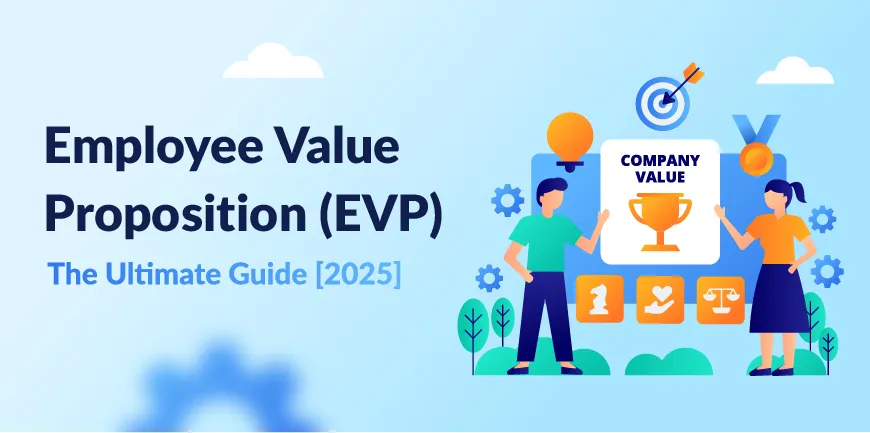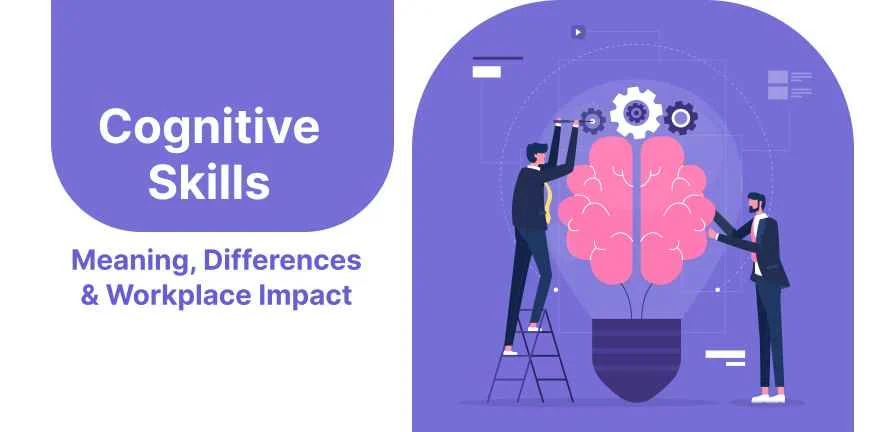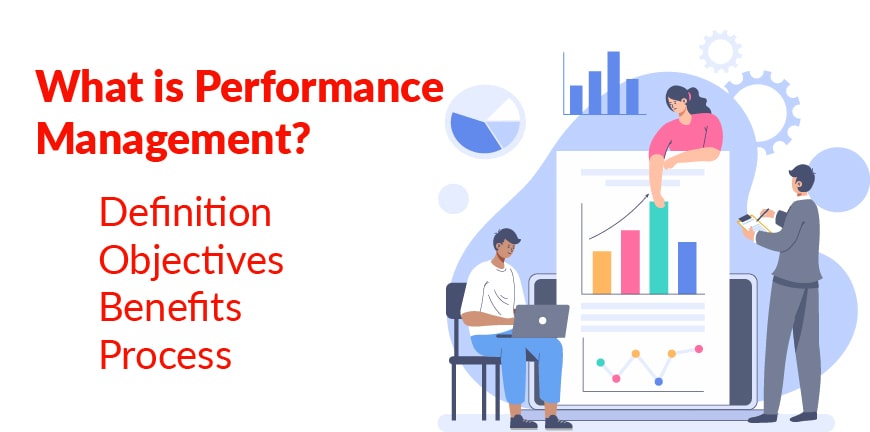
20 Great Exit Interview Questions You Need to Ask
27/10/2025
What is an End-to-End Recruitment Process?
28/10/2025- What is Employee Value Proposition? Meaning and Definition
- EVP vs Employer Brand: Key Differences Explained
- Why Employee Value Proposition Matters in HRM?
- 5 Core Components of a Strong Employee Value Proposition
- What are the 5 Key Benefits of a Well-Defined Employee Value Proposition?
- How to Develop an Effective EVP Strategy?
- How to Improve and Communicate Your EVP?
- What are Employee Value Proposition Best Practices?
- What are the Top Employee Value Proposition Examples from Leading Companies?
- Employee Value Proposition Models and Frameworks
- Employee Value Proposition Models and Frameworks
- Conclusion: Building a Compelling EVP for the Future of Work
- Key Takeaways
- FAQs
A powerful Employee Value Proposition (EVP) is now central to workforce strategy, delivering dramatic business results. Companies delivering on their EVP promises can reduce annual turnover by a remarkable 69%, boost new hire commitment by 30%, and increase revenue by 33% over competitors.
With only 33% of employees feeling engaged, modern organizations must adapt their EVPs to meet demands for career growth and flexibility. Leaders must read this Employee Value Proposition guide to learn the core components and proven practices for building and implementing a compelling EVP in 2025 that transforms talent management and drives superior performance.
What is Employee Value Proposition? Meaning and Definition
An employee value proposition shows what an organization offers to its workforce. It’s a statement that explains what employees get back for their talents, efforts, and contributions. The employee value proposition in HRM captures everything that both external talent and internal employees see as valuable in their employment relationship. This serves as the lifeline of employer branding.
A detailed employee value proposition model has multiple dimensions of the employment relationship, though it’s often written as a short statement. It shows what makes an organization a great place to work by answering two significant questions: “Why should I work here?” for candidates and “Why should I stay?” for current employees. This goes beyond a simple list of benefits and shows the complete employee experience.
The concept works both ways. Employees bring their unique skills, experience, goodwill, and commitment daily. Also, employers provide a well-laid-out package of rewards and experiences in return. This give-and-take relationship creates mutually beneficial employment arrangements.
A well-crafted EVP has these core elements:
- Compensation and financial benefits (salary, bonuses, retirement plans).
- Career development and growth opportunities.
- Work environment and company culture.
- Work-life balance considerations.
- Organizational values, mission, and social purpose.
According to the employee value proposition meaning, it does more than just help with recruitment. We used it to define our organization’s essence in the employment marketplace and to distinguish it from competitors. It also shows what the company stands for: its mission, and contributions to the wider community and society. Potential employees use this value proposition to choose one company over others.
The EVP goes beyond a basic benefits package and shows the complete employment experience. Organizations that want to tap into the potential of top talent understand this. This integrated approach explains why companies of all sizes now focus on this concept to attract, help employees participate, and keep top talent while building their employer brand.
Companies create different EVP messages for current employees and prospective candidates. The highlights for top candidates might differ from those for team members who have been there longer. This strategic approach recognizes that employment relationships change over time and need different support at various stages.
Companies should identify their talent goals before they design or update the employee value proposition strategy. These goals might include better employee engagement, less turnover, lower hiring costs, or reaching more passive candidates. This arrangement will provide more benefits of the employee value proposition that supports broader organizational goals.
EVP vs Employer Brand: Key Differences Explained
People often mention employee value proposition (EVP) and employer brand together, yet they play different roles in talent strategy. Organizations can create better workforce attraction and retention approaches by understanding what sets them apart.
The basic difference is clear: EVP shows what employers give their employees, while the employer brand shows how people see the company as a workplace. This shapes how organizations should handle each concept.
1. Control and Perception
The biggest difference comes down to control. Organizations can shape their employee value proposition components directly through their choices about benefits, culture, and values. The employer brand works differently – it builds from what current employees, past employees, candidates, and even customers think about the company.
The Chartered Institute of Personnel and Development (CIPD) points out that “you have an employer brand whether you consciously develop it or not”. People naturally form views about what it’s like to work at an organization.
The Relationship Between EVP and Employer Brand
Here’s a simple way to look at it: “Employer brand is the reputation, and EVP is the narrative”. Your EVP creates the base for your employer brand. People’s views of your organization come from the values, benefits, and experiences your EVP promises.
This comparison table shows the key differences:
| Aspect | Employee Value Proposition | Employer Brand |
| Nature | What you offer and expect | How you’re perceived |
| Control | Can be designed and managed | Forms based on perceptions |
| Direction | Internal focus on experience | External reputation |
| Function | Defines employment relationship | Differentiates in the labor market |
| Timing | Precedes employer brand | Results from EVP execution |
2. How They Work Together
These concepts work hand in hand as parts of a complete talent strategy. Your EVP guides all employer brand messages and sets the tone for communication. The principles in your EVP build company culture and show your identity as an employer.
A genuine EVP matters a lot – what you promise must match what you deliver. Research shows 65% of candidates drop out of hiring processes when they find the EVP unappealing.
A strong EVP helps your employer brand by:
- Setting clear expectations for potential and current employees.
- Providing consistent guidelines for all employment-related communications.
- Establishing a foundation for authentic workplace culture.
- Creating alignment between promised and delivered employee experiences.
Remote and hybrid work keep growing more common. A well-expressed EVP becomes even more important because it sets expectations without the traditional office setting.
Why Employee Value Proposition Matters in HRM?
Business metrics show that EVP plays a significant role in strategic human resource management. Companies need a well-crafted employee value proposition model to deliver real results that affect their bottom line in today’s competitive market.
Companies have compelling reasons to invest in EVP development. Gartner’s research shows that organizations delivering on their EVP promises can cut annual employee turnover by up to 69%. This huge drop helps HR departments tackle their biggest challenge: retaining talented people.
A strong EVP helps companies attract better talent. Organizations with appealing value propositions see new hire commitment rise by almost 30%. This improved commitment helps new employees start contributing faster and be more productive from day one.
Employee engagement shows how important EVP really is. Employees become more invested in their work when they understand their organization’s mission, vision, and values through a clear EVP. Yes, it is easy to measure these results – teams that are highly engaged can boost profits by 23% and customer loyalty by 10%.
The financial benefits are substantial. Companies save money on hiring and training by getting the right people and keeping them longer. Engaged employees create better business results:
- Higher productivity (studies show happy employees are 12% more productive).
- Better profits through improved performance.
- More loyal and satisfied customers.
- Steady business growth.
A clear employee value proposition builds trust within organizations. Gallup’s research reveals that 96% of engaged employees trust their leaders, compared to only 46% of actively disengaged employees. This trust helps organizations stay strong and adapt during changes.
HR professionals use EVP as a framework to connect every part of the employee experience: from company culture and values to rewards, career growth, and wellbeing support. This comprehensive approach helps HR create meaningful experiences throughout an employee’s journey.
Companies must keep updating their employee value proposition model as workforce expectations change. Modern workers want flexibility, tailored experiences, and meaningful work. An EVP that meets these needs helps companies compete for talent. This flexibility keeps the EVP relevant as market conditions shift.
Employee value proposition importance in HRM goes beyond just hiring and keeping employees. A well-planned and executed EVP arranges workforce capabilities with business goals. This creates the foundation needed for lasting organizational success and competitive advantage.
5 Core Components of a Strong Employee Value Proposition
A strong employee value proposition framework has five key components. These employee value proposition components shape how employees and potential hires see an organization. Together, they paint a clear picture of what it really means to work for a company beyond just getting paid.
1. Compensation and Benefits
The foundation of any EVP begins with compensation: what employees earn through salary, financial rewards, and benefits. Studies show employees who feel good about their pay and benefits are 26% more likely to exceed expectations at work.
This part has competitive salaries, detailed health insurance, retirement plans, bonuses, profit-sharing, and stock options. Pay might not be everyone’s top priority, but it’s still a deciding factor—higher salaries remain the number one reason people switch jobs.
2. Work Environment and Company Culture
The workplace environment has a big effect on how engaged and satisfied employees feel. A good environment needs the right physical workspace design, team dynamics, leadership styles, technology resources, and overall atmosphere.
Employees need to feel they belong in a supportive and inclusive culture. Strong EVPs showcase values like state-of-the-art thinking, integrity, environmentally responsible practices, diversity, and inclusion. This helps attract candidates whose values line up with the company’s mission.
3. Work-Life Balance
Today’s employees want more flexibility and well-being options. They look for remote work choices, flexible schedules, good vacation policies, parental leave, and wellness programs. Research shows 80% of employees want to work from home at least 2-3 days each week. Companies that put employee wellbeing first see real benefits—89% of their staff recommend it as a great workplace.
4. Career Development Opportunities
Growth potential plays a vital role in bringing in ambitious talent. This includes training programs, mentorship opportunities, clear paths to promotion, and leadership development. The best candidates look for companies that offer continuous learning and ways to build skills and advance their careers. Younger employees particularly want companies where they can move up through the ranks.
5. Values, Mission, and Purpose
Employees want work that matters and lines up with their personal values. This part shows how the organization helps society and stays committed to ethical practices beyond just making money. When values line up, employees feel more connected and engaged. They stay longer with companies that share their core beliefs.
Organizations should develop these components together. The best EVPs take a balanced approach and address what matters most to employees. A well-crafted value proposition brings in top talent, keeps them engaged, and helps achieve business goals.
What are the 5 Key Benefits of a Well-Defined Employee Value Proposition?
A well-crafted employee value proposition brings real business results that go beyond just attracting talent. Companies that put effective EVP strategies in place gain major benefits of employee value proposition in many areas of performance.
The biggest win from a resilient EVP shows up in retention numbers. Gartner’s research shows that companies delivering on their EVP promises can cut yearly employee turnover by up to 69%. US businesses lose trillions each year to employee turnover, so this reduction saves huge amounts in recruitment and training costs.
Strong employee value propositions also boost new hire commitment by nearly 30%. New employees come in with clearer expectations and better alignment with company values right from the start.
A compelling EVP makes teams more engaged and productive. Teams with high engagement increase profits by 23% and make customers 10% more loyal. The University of Warwick’s research shows that happy employees are 12% more productive. This boost in productivity comes in part from greater workplace happiness.
Clear EVPs build trust throughout organizations by openly communicating expectations and rewards. This creates mutual respect between employers and employees. Research shows that 96% of engaged employees trust their company’s leaders, while only 46% of disengaged employees feel the same way.
The benefits extend outside the company, too. A strong EVP helps organizations stand out from competitors and signals that they’re great places to work. This reputation boost goes beyond potential hires – companies with compelling EVPs often see better business results overall.
These benefits of employee value proposition create an upward spiral. Lower turnover cuts costs. Better engagement drives productivity. Higher performance boosts profits. A stronger reputation attracts better talent. The job market gets more competitive every day, especially in fields like tech and finance. A distinctive EVP gives companies the edge they need to attract top talent.
HR professionals can use these measurable results to make the case for EVP investments. The numbers clearly show that smart EVP development helps organizations succeed through both financial gains and cultural improvements.
How to Develop an Effective EVP Strategy?
A well-laid-out plan beats organic development when building a strategic employee value proposition. The process has several significant phases that turn employee insights into practical commitments.
Success in EVP creation begins with detailed data collection. Organizations get the best results when they combine quantitative surveys with in-depth interviews that reach current staff and potential candidates. The research phase should capture feedback through active and passive listening channels to understand what matters most to your workforce.
The design phase comes next and transforms these insights into a structured framework. Your core promises and commitments should use real proof points that balance emotional, differentiating, and transactional elements. Each organization needs an EVP that truly reflects its brand and workplace reality. This needs dedicated champions who will shape its definition.
Implementation plays a vital role after design. Your EVP should speak in clear, emotionally resonant language. Build an employee-facing version that shows how it affects daily work life. The EVP needs activation through external and internal channels:
Externally:
- Launch employer branding initiatives via careers websites.
- Showcase diverse and authentic employee stories.
- Create transparent, inclusive job advertisements.
Internally:
- Deliver on promises made during recruitment.
- Act upon genuine employee needs.
- Improve learning, wellbeing, and performance initiatives.
Good measurement systems will give a path to continuous improvement. Companies that track employee experience see 23% higher engagement, 21% increased productivity, and 24% lower turnover rates. Useful metrics include:
- Increases in quality job applications.
- Reduced employee turnover rates.
- Greater engagement on job-related social media posts.
- Improved responses from passive candidates.
A listening framework helps track awareness, adoption, and sentiment over time to stay relevant. The EVP should work as a live strategy that evolves with changing workplace expectations. Yearly assessments help ensure your employee value proposition stays compelling and authentic.
The core team across the organization shares responsibility for EVP activation; people strategic teams cannot succeed alone. Leadership involvement & internal champions transform your EVP beyond simple messaging. It becomes a catalyst for attraction, engagement, and employee trust.
How to Improve and Communicate Your EVP?
Companies that track their employee experience see 23% higher employee involvement, 21% improved productivity, and 24% lower turnover rates. These numbers show how communication strategies can make your EVP appeal to current and future employees.
A full picture of your current situation kicks off EVP improvements. You should audit your existing offerings, get employee feedback throughout their time with you, and spot any gaps between what you offer and what employees actually value. This insight helps you make targeted improvements based on real needs rather than guesses.
Your message must stay authentic. The EVP should give a true picture of what it means to work at your organization. Many companies run into trouble when their leadership talks about values that don’t match everyday work life. Your external promises need to match your employees’ actual experiences.
To communicate well, use multiple channels:
Externally:
- Show real employee stories on your careers website.
- Write clear, inclusive job posts.
- Use social media and brand ambassadors.
Internally:
- Weave EVP messages throughout the employee’s time with you.
- Give recruiters and hiring managers clear messaging guidelines.
- Use consistent on-brand templates.
Getting leadership support is vital to success. Leaders are key messengers who need to know how to communicate and act in line with your EVP. Moreover, look for influential employees who can champion your cause and inspire others to embrace the EVP.
All the same, just talking isn’t enough. Top organizations spend about 80% of their effort meeting EVP promises and only 20% defining them. This approach builds credibility and trust with everyone involved.
Your EVP should grow and change over time. Set up ways to measure awareness, adoption, and employee feelings. Regular feedback and updates will keep your employee value proposition relevant as workplace expectations change.
What are Employee Value Proposition Best Practices?
Organizations that succeed follow proven practices to make their employee value proposition work. These employee value proposition best practices turn theory into real workplace benefits.
You need to be specific in your EVP statements. Generic claims won’t work – tell people exactly what makes your organization special. Don’t just say “we offer growth opportunities.” Instead, explain how employees can grow through mentorship programs or advanced training courses. This helps candidates know what they’ll get.
Your organization must distinguish with effect. Show real employee value proposition examples of what you offer and spotlight programs that prove your steadfast dedication to employee well-being. This genuine approach attracts top talent and makes your EVP appeal to candidates who fit your culture naturally.
Creating effective EVPs needs target group-specific branding. Different talent groups want different things. New graduates might want learning opportunities more, while seasoned professionals could value leadership growth or work-life balance programs. Your message should speak directly to each audience.
The EVP must think over the full employee lifecycle. It should paint an accurate picture of your organization from hiring through retention. Employees become brand champions when they experience the promised environment throughout their time with you.
Great companies spend about 80% of their effort meeting EVP promises and only 20% defining them. This makes the EVP authentic and tangible and builds trust with current and future employees.
Evidence-based insights from employees, the labor market, and competitors should shape your strategy. Effective EVPs must be:
- Appealing to both internal and external audiences.
- Genuine and arranged with organizational values.
- Relevant to organizational strategy and adaptable to change.
- Distinguished from competitors.
Winning EVP strategies start with listening. Run surveys, focus groups, and interviews to learn what current employees value most. Mix these insights with your organization’s mission to create a message that sounds real and appeals to both your team and potential hires.
Your employee value proposition needs regular updates. Keep track of engagement metrics, get feedback through surveys, and tweak your message to stay relevant as workplaces change.
What are the Top Employee Value Proposition Examples from Leading Companies?
Top companies use innovative employee value proposition strategies that show how theory works in practice. These employee value proposition examples inspire organizations to develop their own EVP.
Microsoft leads the technology sector with a game-changing wellness program that cut burnout by 35% and boosted team productivity. Their complete mental health support system and flexible scheduling options are now the industry standard. Netflix gives its employees unlimited vacation time and decision-making power, which results in exceptional participation rates.
HubSpot’s EVP starts with the tagline “Your best work starts here.” The company backs this promise with many benefits, such as unlimited vacation, fully remote work options, and five-year sabbaticals. Their proposition centers on work-life balance to “help you be the best ‘you’ that you can be.” The company’s extensive “Culture Code” document shows how this culture shapes daily operations.
Mayo Clinic’s remarkable work-life integration programs feature flexible scheduling and dedicated wellness spaces that substantially reduce staff burnout. Cleveland Clinic’s “Caregivers First” philosophy includes complete mental health support and specialized career paths. These programs show how healthcare employers create meaningful growth opportunities while delivering exceptional patient care.
Target’s flexible scheduling platform cut staff turnover by 40% and improved employee satisfaction scores. Costco shows the effect of mixing competitive wages with clear advancement paths. The company offers starting salaries 25% above the industry average and promotes 85% of store managers from within.
Airbnb brings employees together with the mission to “Create a world where anyone can belong anywhere.” Travel-friendly benefits like annual travel credits and paid volunteer time support this goal. Their EVP perfectly matches their platform, which enables a travel community of guests and hosts.
Zip Co sets itself apart through trailblazing policies. The company’s world-first initiatives support employees after miscarriage and abortion. These policies show their genuine dedication to employee well-being beyond standard benefits packages.
Employee Value Proposition Models and Frameworks
Organizations now have several proven models to help them shape their employee value proposition. These models support the creation of EVPs that strike a chord with employees’ varied needs and help achieve business goals.
Today’s employee value proposition models use a layered approach to address how employees participate at different levels. A popular framework divides the EVP into three key areas:
- Non-negotiable transactional elements – Simple requirements that employees expect, such as pay, flexibility, and stability. These rarely set an organization apart, but their absence makes it hard to attract and keep talent.
- Differentiators based on subjective experience – Unique experiences that set the organization apart through innovative offerings tailored to specific talent segments. Successful organizations excel in two or three areas rather than trying to do everything.
- Emotional connection elements – Features that show why employees belong here through purpose, pride, and culture. These intangible aspects create lasting bonds with the employer brand.
Aon suggests an integrated framework with four main parts: total rewards, time off/flexibility, career progression/skills development, and mission/culture. These parts need to work together through clear communication strategies.
Research by Mortensen and Edmondson reveals four pillars of employee experience that shape EVP surveys: material offerings, growth and development, connection and community, plus meaning and purpose. Organizations can gather better information about employee priorities through this well-laid-out approach.
Modern EVP models now use data to improve their design. HR analytics help organizations understand which EVP elements work best for different groups of employees. This tailored approach reshapes how companies attract and engage talent by meeting varied employee groups’ changing needs.
EVP frameworks must answer these key strategic questions to stay competitive:
- Does our EVP match our business strategy?
- Will it help us grow?
- Can we attract and keep the talent we want?
- What does our HR data tell us about employee needs?
- How do we balance employee expectations with business needs?
The best EVP frameworks focus on being genuine, unique, and relevant. They become the foundation for people-focused organizations where EVP guides talent, reward, and employee experience based on real employee feedback.
Employee Value Proposition Models and Frameworks
Organizations now have several proven models to help them shape their employee value proposition. These models support the creation of EVPs that strike a chord with employees’ varied needs and help achieve business goals.
Today’s EVP models use a layered approach to address how employees participate at different levels. A popular framework divides the EVP into three key areas:
- Non-negotiable transactional elements – Simple requirements that employees expect, such as pay, flexibility, and stability. These rarely set an organization apart, but their absence makes it hard to attract and keep talent.
- Differentiators based on subjective experience – Unique experiences that set the organization apart through innovative offerings tailored to specific talent segments. Successful organizations excel in two or three areas rather than trying to do everything.
- Emotional connection elements – Features that show why employees belong here through purpose, pride, and culture. These intangible aspects create lasting bonds with the employer brand.
Aon suggests an integrated framework with four main parts: total rewards, time off, flexibility, career progression, skills development, and mission. These parts need to work together through clear communication strategies.
Research by Mortensen and Edmondson reveals four pillars of employee experience that shape EVP surveys: material offerings, growth and development, connection and community, plus meaning and purpose. Organizations can gather better information about employee priorities through this well-laid-out approach.
Modern EVP models now use data to improve their design. HR analytics help organizations understand which EVP elements work best for different groups of employees. This tailored approach reshapes how companies attract and engage talent by meeting varied employee groups’ changing needs.
EVP frameworks must answer these key strategic questions to stay competitive:
- Does our EVP match our business strategy?
- Will it help us grow?
- Can we attract and keep the talent we want?
- What does our HR data tell us about employee needs?
- How do we balance employee expectations with business needs?
The best EVP frameworks focus on being genuine, unique, and relevant. They become the foundation for people-focused organizations where EVP guides talent, reward, and employee experience based on real employee feedback.
Conclusion: Building a Compelling EVP for the Future of Work
A robust Employee Value Proposition (EVP) is now a critical strategic framework, driving superior business results like 69% lower turnover and 30% higher new hire commitment. A successful EVP must balance five elements: compensation, work environment, work-life balance, career development, and purpose. Management must ensure these elements are authentically delivered across the entire employee lifecycle.
Moreover, market leaders prove that EVPs are not fixed statements but evolving strategies that respond to demands for flexibility, well-being, and purpose. The future belongs to organizations that continuously listen to their employees, adapt their offerings, and communicate transparently. A compelling EVP moves beyond attraction; it fosters an environment of mutual success.
Ready to transform your EVP into a powerful retention tool? Partner with Alp Consulting for end-to-end employee engagement solutions that design, implement, and measure an EVP tailored to your strategic goals.
Key Takeaways
- Retention Impact: Effective EVPs can slash employee turnover by up to 69% and boost new hire commitment by 30%.
- Core Elements: Compelling EVPs must balance compensation, environment, work-life balance, development, and purpose/values.
- Authenticity Focus: Dedicate 80% effort to authentic delivery and 20% to defining the EVP; credibility drives success.
- Targeted Strategy: Modern EVPs require personalization and customization based on specific talent segments, not one-size-fits-all.
- Continuous Evolution: Regularly assess, collect employee feedback, and refine the EVP to keep pace with evolving workforce expectations.
FAQs
1. What are the key components of an effective Employee Value Proposition (EVP) in 2025?
An effective EVP in 2025 consists of five core components: competitive compensation and benefits, a positive work environment and company culture, work-life balance initiatives, career development opportunities, and alignment with organizational values and purpose.
2. How does a strong EVP impact employee retention and recruitment?
A well-implemented EVP can significantly reduce annual employee turnover by up to 69% and increase new hire commitment by nearly 30%.
3. What’s the difference between an Employee Value Proposition and Employer Brand?
An EVP represents what an employer offers employees, while the employer brand reflects how the company is perceived as a workplace. The EVP serves as the foundation for the employer brand, informing how people view the organization.
4. How often should companies review and update their EVPs?
Organizations should treat their EVP as a living strategy, regularly assessing and refining it to maintain relevance. Ideally, companies should review their EVP annually to ensure it aligns with changing workforce expectations and business objectives.
5. What are some best practices for communicating EVP effectively?
Effective EVP communication involves being specific about unique offerings, differentiating with impact, tailoring messages to different talent segments, considering the full employee lifecycle, and focusing on authenticity.

Rajkumar Shanmugam
Rajkumar Shanmugam is the Head of HR at ALP Consulting, bringing over 19 years of comprehensive HR leadership experience across India and international markets. His expertise spans talent acquisition, employee relations, performance management, compliance, and HR transformation. Rajkumar has a proven track record of driving people-centric initiatives, enhancing workplace culture, and aligning HR strategy with business goals. With extensive experience in US staffing operations and global mobility, he continues to lead organizational excellence through innovation and employee engagement.




